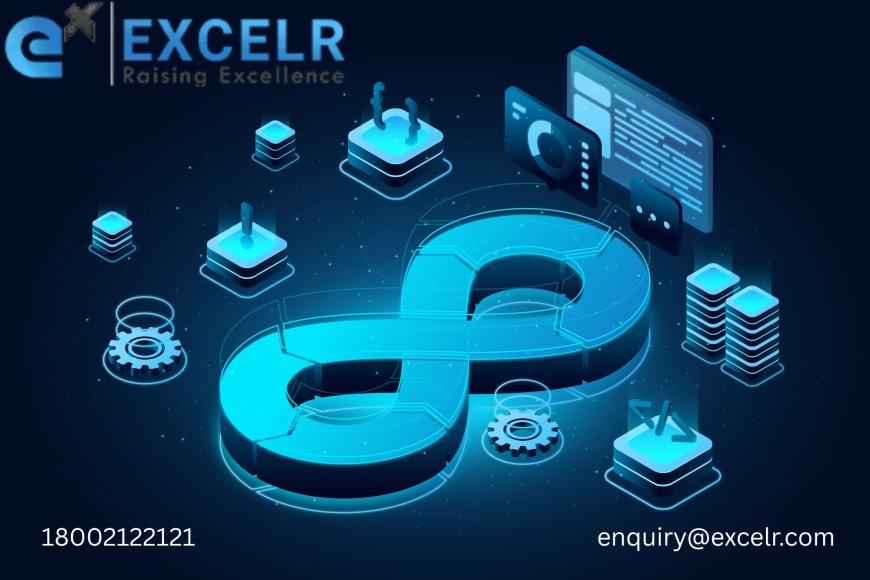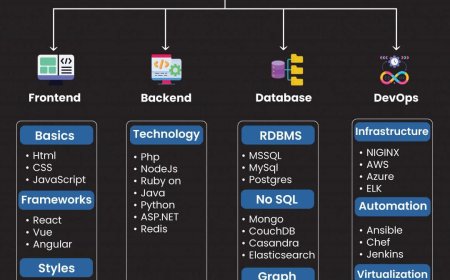Implementing Event-Driven Architectures with Kafka and RabbitMQ in Chennai
Introduction
In todays fast-paced digital ecosystem, applications must respond instantly to a continuous stream of user actions, sensor updates, and system changes. This shift toward real-time, responsive systems has made event-driven architecture (EDA) a foundational design pattern in modern software development. Unlike traditional architectures that rely on synchronous communication, EDA allows systems to react to events asynchronously, making them more resilient, scalable, and responsive.
As businesses pivot to cloud-native applications and microservices, EDA plays an increasingly critical role in building systems that can scale with demand. Chennai, with its fast-growing tech scene, has become a preferred destination for professionals looking to upskill in DevOps and event-driven technologies.
Understanding Event-Driven Architecture (EDA)
Event-driven architecture is a software design model where services communicate by producing and consuming events. These events, such as user actions or system triggers, are captured and distributed through brokers that decouple the producers (senders) from the consumers (receivers).
In EDA, the key components include:
-
Producers: Systems or services that generate events
-
Consumers: Systems or services that react to those events
-
Event Brokers: Intermediaries (like Kafka or RabbitMQ) that route events from producers to the appropriate consumers
This architecture supports loose coupling, which allows each component to operate independently. It promotes scalability, since multiple consumers can process events in parallel, and enhances fault tolerance by isolating failure in one part of the system from the rest.
Apache Kafka: Stream Processing at Scale
Apache Kafka is a high-performance, distributed event streaming platform built for massive scalability and low-latency data pipelines. Its core architecture revolves around:
-
Topics: Categories where messages are published
-
Partitions: Subdivisions of topics to allow parallel processing
-
Producers and Consumers: Roles that send and receive messages, respectively
Kafka is designed for high throughput and durability, making it suitable for high-velocity use cases like real-time analytics, fraud detection, clickstream analysis, and IoT telemetry. Companies in sectors such as e-commerce, finance, and telecommunications rely on Kafka to stream millions of messages per second while maintaining fault tolerance.
Its integration with processing frameworks like Apache Flink and Spark further enables stream-based data transformation, empowering businesses to act on insights in near real-time.
RabbitMQ: Messaging for Reliable Delivery
RabbitMQ is a message broker built with a focus on reliable delivery and flexible routing. Unlike Kafka, which emphasises streaming and throughput, RabbitMQ excels at managing queues and ensuring that messages are delivered and acknowledged.
It supports features such as:
-
Message Acknowledgement: Ensures that messages are processed before removal
-
Routing Keys and Exchanges: Allow fine-grained control over how messages are directed
-
Dead Letter Queues: Handle messages that cannot be processed
RabbitMQ is ideal for task queues, workflow engines, and business process automation, where message integrity and precise routing are more important than sheer volume.
For example, an insurance company processing claims might use RabbitMQ to ensure each request is routed to the correct department and tracked throughout its lifecycle, even if some systems go offline temporarily.
Choosing Between Kafka and RabbitMQ
While both Kafka and RabbitMQ are messaging platforms, they serve different needs:
|
Feature |
Apache Kafka |
RabbitMQ |
|
Use Case |
High-throughput stream processing |
Task queues and transactional systems |
|
Ordering Guarantees |
Maintains order within partitions |
Supports message routing but not strict ordering |
|
Message Retention |
Long-term storage |
Short-term, until consumed |
|
Performance |
Scales horizontally with high throughput |
Focus on reliable, transactional delivery |
Teams often choose Kafka when building analytics pipelines or real-time dashboards, and RabbitMQ when building internal workflows or event-driven microservices requiring precise control over delivery.
Learning EDA Tools Through Hands-On DevOps Training
Understanding Kafka and RabbitMQ requires more than theoretical knowledge. Professionals need hands-on experience configuring, deploying, and integrating these tools into real-world pipelines. A well-structured devops course in chennai can bridge this gap by offering lab-based training on cloud-native environments.
Such training often involves:
-
Containerization with Docker for deploying Kafka and RabbitMQ clusters
-
CI/CD Pipelines using Jenkins and GitLab to automate event-driven deployments.
-
Monitoring and Logging with tools like Prometheus, Grafana, and ELK Stack
-
Integration with Kubernetes, enabling learners to manage scalability and orchestration
By engaging in scenario-based labslike setting up an order-processing system with Kafka or a background task scheduler with RabbitMQlearners build the skills needed for production-ready systems.
Career Relevance and Job Roles in EDA and Messaging
With more enterprises moving to microservices and real-time platforms, demand is rising for professionals who can build, maintain, and troubleshoot event-driven systems. Career roles that benefit from this expertise include:
-
DevOps Engineers: Deploy and maintain Kafka/RabbitMQ clusters, manage automation pipelines
-
Backend Developers: Design microservices that communicate using events
-
Platform Engineers: Ensure system reliability, scalability, and message integrity
-
Site Reliability Engineers (SREs): Monitor and resolve issues in event pipelines
In Chennai, job markets are increasingly seeking candidates with Kafka and RabbitMQ skills, especially in sectors like fintech, logistics, health tech, and media streaming.
Why Enroll in a Local DevOps Program in Chennai
Choosing a locally-based program offers several distinct advantages. Enrolling in a devops course in chennai allows learners to benefit from face-to-face mentorship, region-specific use cases, and career networking opportunities with local employers.
Programs in Chennai often align their curriculum with current industry trends, helping learners gain exposure to tools like Kafka, RabbitMQ, Kubernetes, and Prometheus within relevant cloud-native architectures. Additionally, many institutes offer placement support, internships, and capstone projects, accelerating learners transition into DevOps and SRE roles.
Conclusion
As businesses evolve toward real-time decision-making and microservice scalability, event-driven architectures have become essential for building agile and resilient systems. Tools like Apache Kafka and RabbitMQ enable developers to decouple services, process high volumes of data, and ensure reliable communication across distributed systems.
By enrolling in structured training programs and gaining hands-on experience with these messaging tools, learners in Chennai can build the expertise needed to thrive in the DevOps landscape. Event-driven design is not just a trendits the future of how software communicates, scales, and succeeds.









































